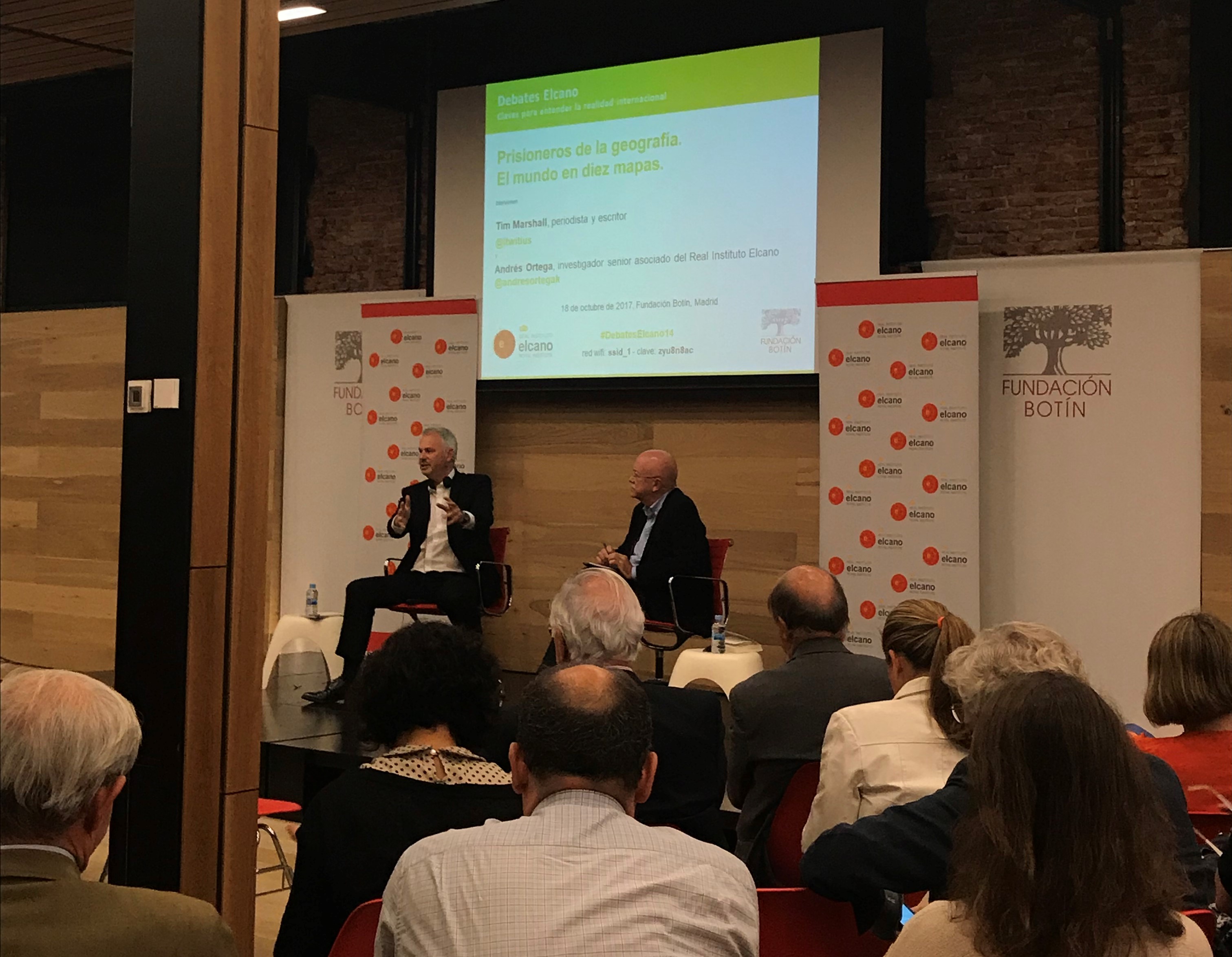World is divided in ten maps, by Tim Marshall

Last 18th October there was a debate organised by the Real Instituto Elcano in Fundación Botín in Madrid about the book ‘Prisoners of Geography: Ten Maps That Tell You Everything You Need to Know About Global Politics’. The conference was presided by Andrés Ortega, investigator from Instituto Elcano, and Tim Marshall, journalist and writer of the book. At the beginning, Marshall started giving the keys of the book, underlining the importance of the present context and defending the phrase that says that ‘life has changed and we don’t know where it is going’. Later on, he simply explained how the world is divided in ten maps.
First map: North America
Marshall showed the importance of geopolitics with this map. He demonstrated how well is the USA surrounded, with all its surrounded geography acting as a natural barrier to keep it safe from invaders. He also pointed out the importance that the country has taken after the World War II, specifically the current importance of the dollar.
Second map: South America
In this case, Marshall pointed out the difference between the unity of North America and the division of South America. As well as the USA is unified by the extensive area of the Mississippi River, South America is clearly divided by its rainforests, from east to west, and the ice from the Andes, down in the south.
Third map: China
In the words of Marshall, ‘it is the decade and the century of America and China’. Alluding to the stars of its flag, the author explained how the proletary, the bourgeoisie, the intellectuals and the patriotic capitalists, the four little stars, where under the big star of communism. He illustrated how China is safe from Mongolia, Russia, Manchuria… pointing out the jungles of the south, the islands next to the country, all America’s allies, and the Himalayas as its natural defending barriers.
Fourth map: India
In this map, Marshall illustrated not only how important is to have a good position, but also the importance of having a high position against other countries. In this case, India has a worse position compared to China, as it is a wide valley next to the Himalayas.
Fifth and sixth map: Russia and the Black Sea
Marshall first presented Russia as ‘the best example of prison’. He explained the two main problems that the country has: its cold ports and its inability to have a navy, and the flat territories of the west as a wide opened door that needs to be protected from invasions.
Also, with the current invasion topic of Ukraine and Crimea, Marshall showed the importance of the city of Sebastopol, a clear goal for Russia as it is a perfect point to connect the whole country with the Black Sea and Europe, both at the same commercial port.
Seventh map: Europe
As British, Marshall analysed the Brexit issue, highlining all the seas, oceans and good trees that Great Britain has in order to enlarge its number of ships and its navy influence. Also, he explained Brexit as a Global Britain, not a Britain, an island, attached to the European continent.
Second, he defined the union that Europe presents, thanks mostly to the EU, but all with a corrupted democracy.
Eight map: Arabian Peninsula
The author centred this part of his speech explaining the cause of the Syrian war. He said that Syria supposes a great part of earth, a connection between the Mediterranean Sea and Middle East. In addition, he commented the religious differences between the regions, another factor that contributes to war.
Ninth map: West Bank
Marshall showed one of the main causes of the conflict between Israel and Palestine. He commented the current division that Palestine presents, divided by Israel, which is continually growing that division and making Palestine smaller. The author illustrated this as a great example of how geopolitics work and how territories change along the years.
Tenth map: The Arctic Ocean
In this last map, Marshall tried to explain Trump’s disinterest to global warming, giving evidence that if this ocean melts, the USA and Russia will be able to create new commercial routes above it.
In the last part of the debate, several questions were asked to Marshall. The most interesting ones dealt with how Trump and Theresa May view the map of the world in their heads. In Trump’s case, Marshall described his map with narrow horizons and places organised in compartments, while Theresa May’s one is characterised by no vision, just tactics.
Carlos Polo Rosario


